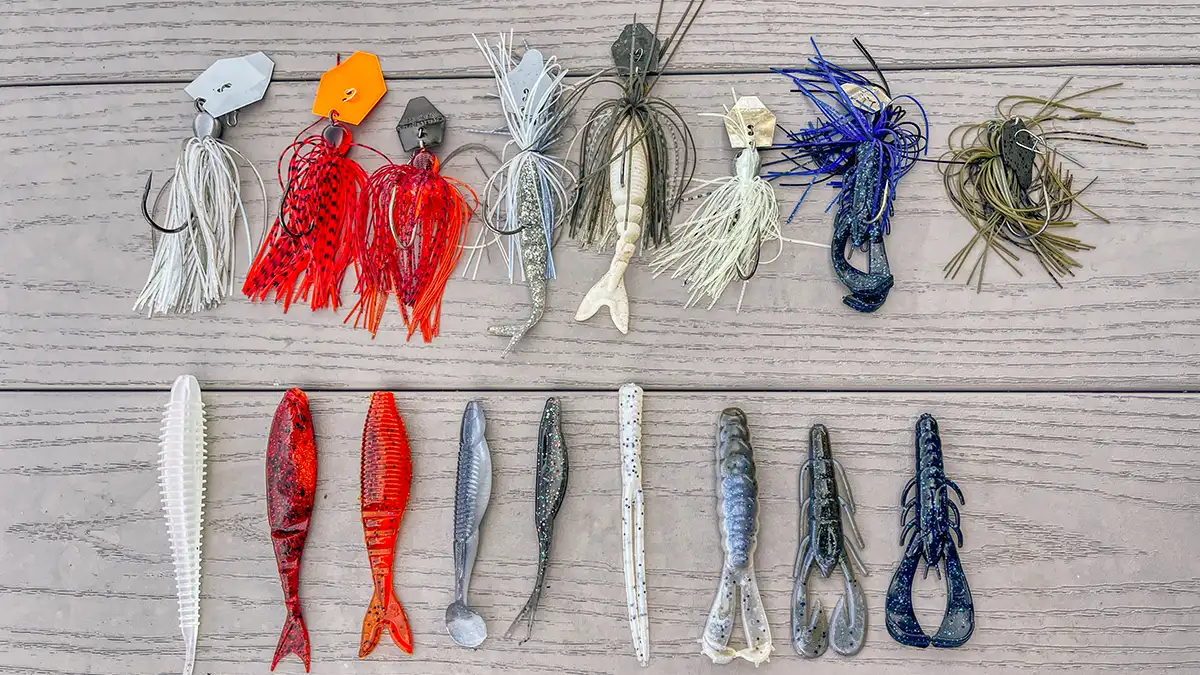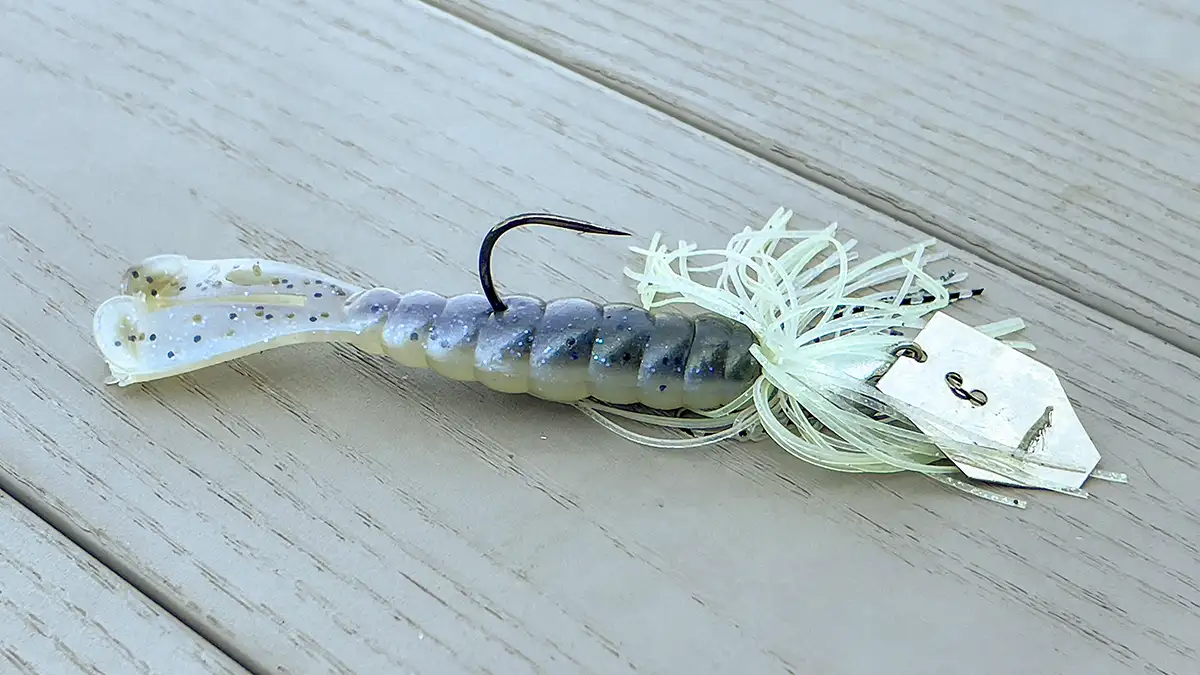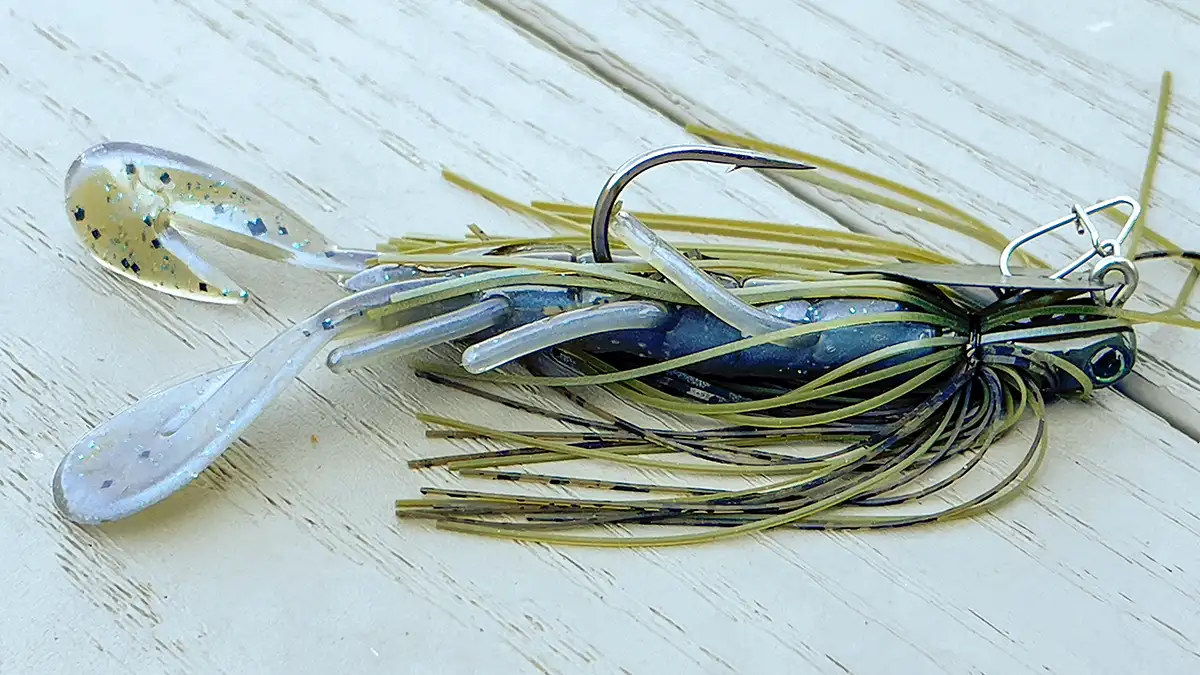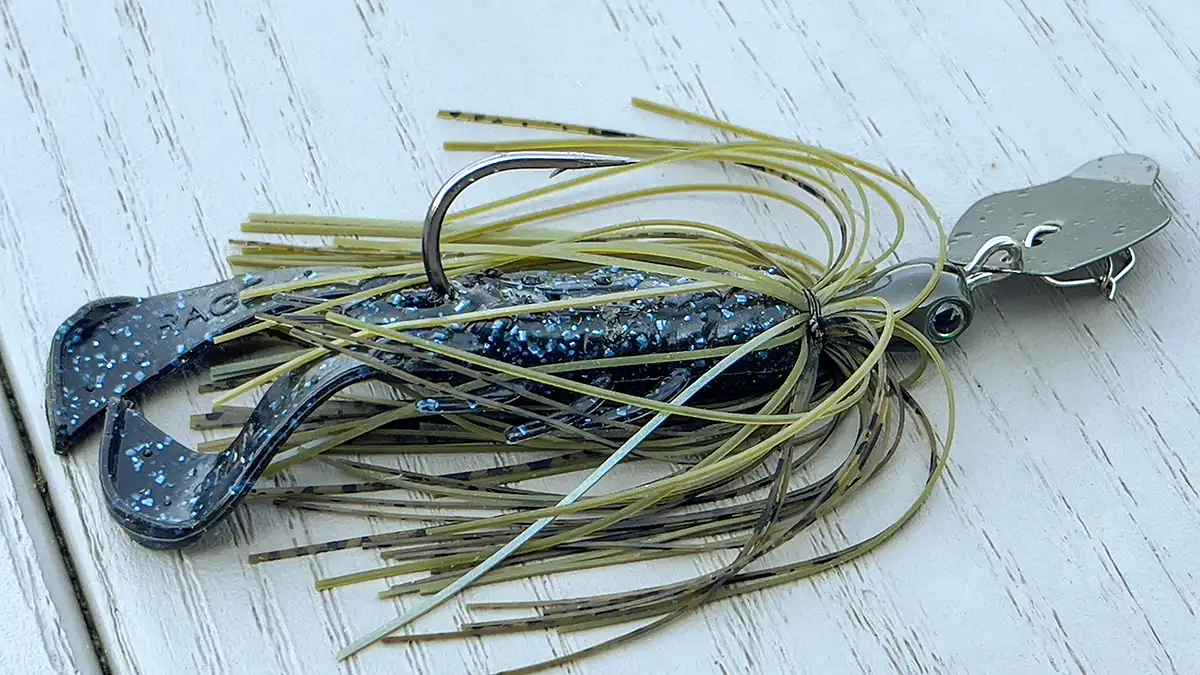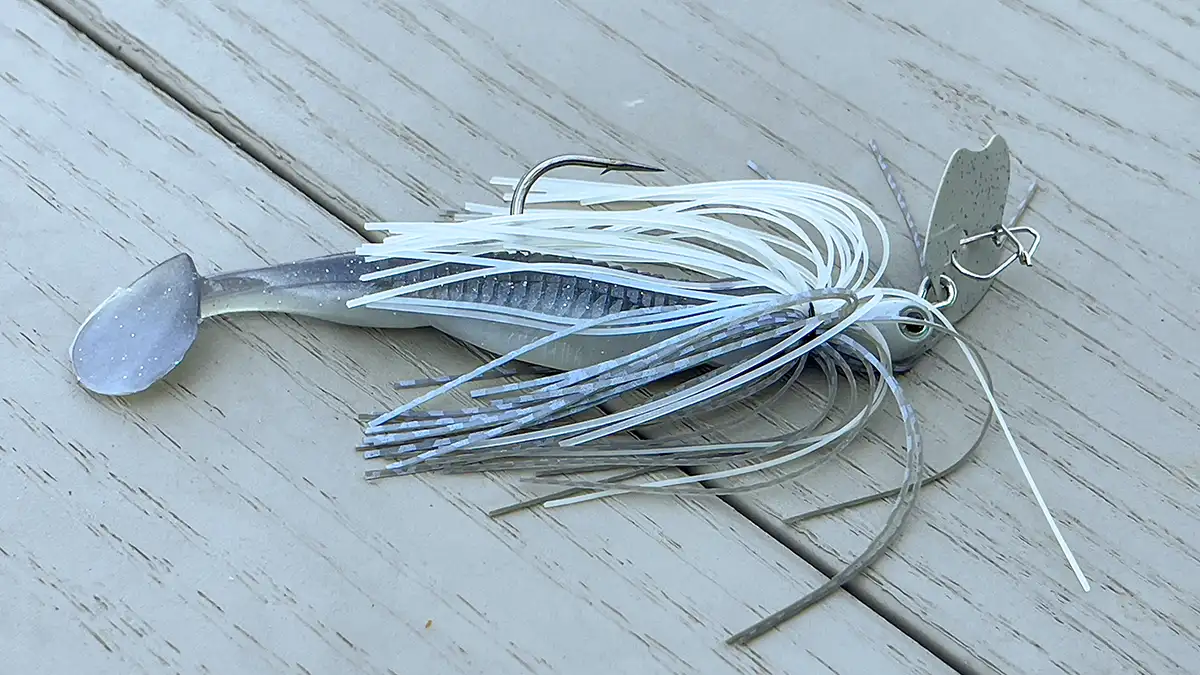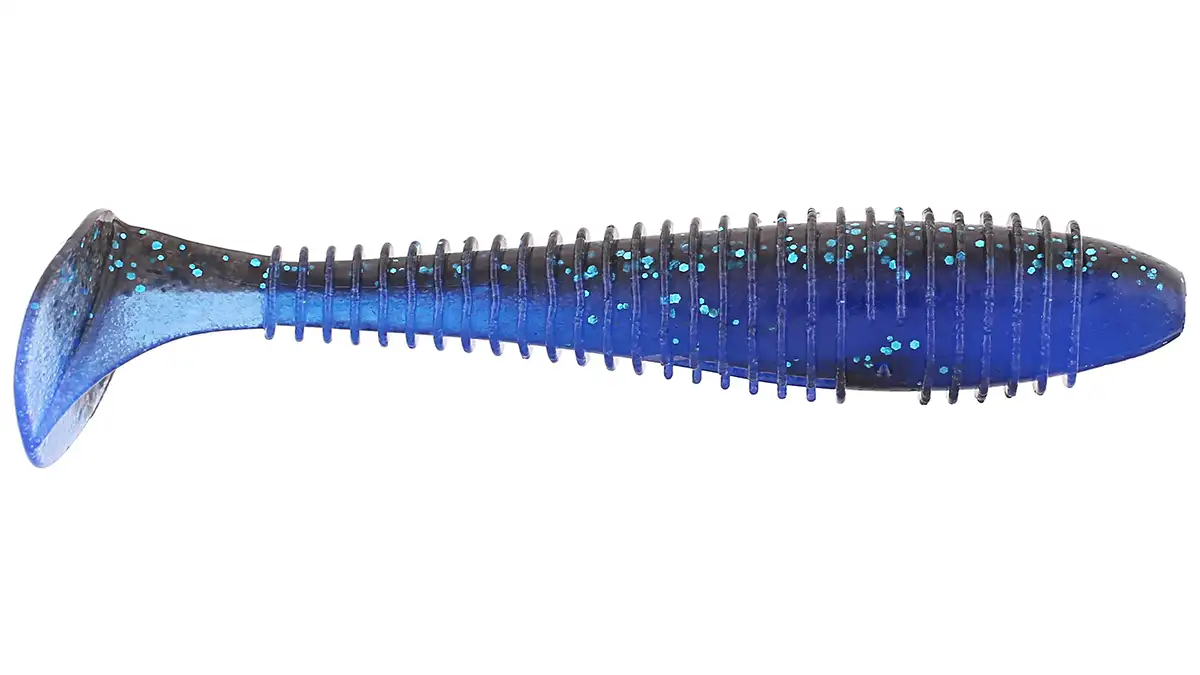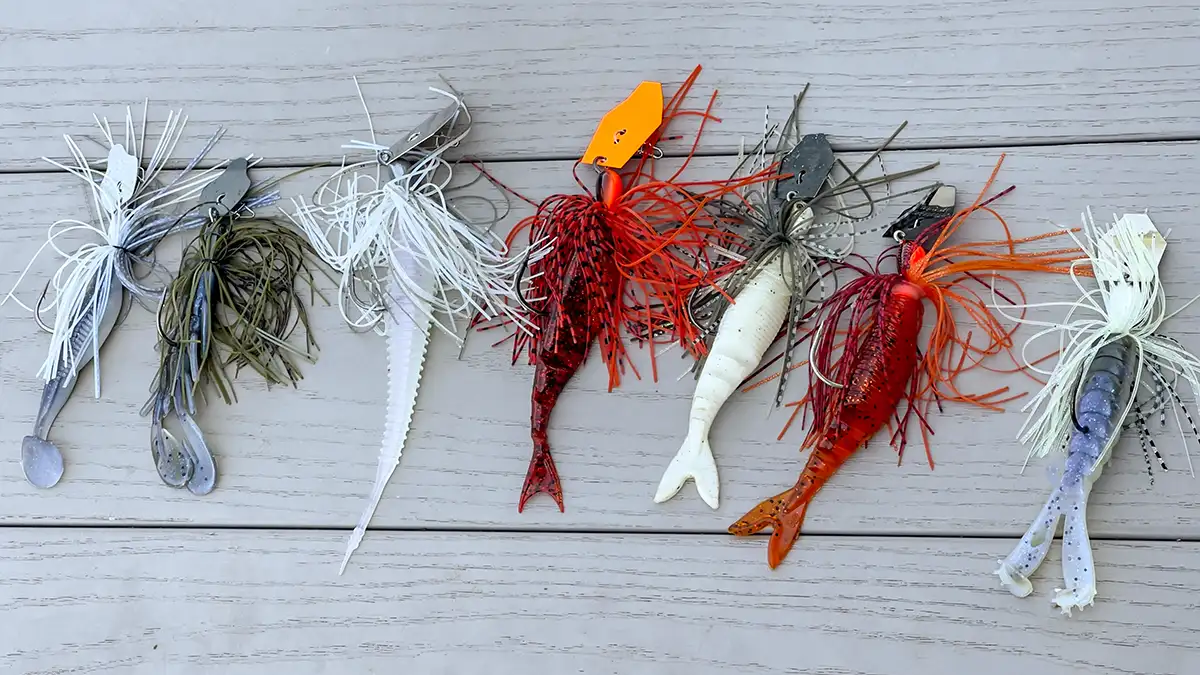There is no doubt the ChatterBait and the category of vibrating jigs has become one of the mainstays of bass fishing. It works in a variety of situations. It works in a variety of seasons. And, it catches fish consistently from coast to coast. But one of the biggest considerations in your ChatterBait combination is the Chatterbait trailer. So we reviewed dozens of ChatterBait trailers and came up with our top picks for the Best ChatterBait Trailers.
Our top picks for ChatterBait Trailers
- Best Overall: Yamamoto Zako – Buy from Bass Pro
- Best Single Tail Action: Missile Baits Spunk Shad – Buy from Bass Pro
- Best Shad Trailer: Z-Man RaZor ShadZ – Buy from Bass Pro
- Best Kicking Trailer: Z-Man Goat – Buy from Bass Pro
- Best Craw Trailer: Zoom Speed Craw – Buy from Bass Pro
- Honorable Mention Craw: Strike King Scounbug – Buy from Bass Pro
- Best Swimbait Trailer: Reaction Innovations Skinny Dipper – Buy from Tackle Warehouse
- Honorable Mention Swimbait: Keitech Swing Impact FAT – Buy from Bass Pro
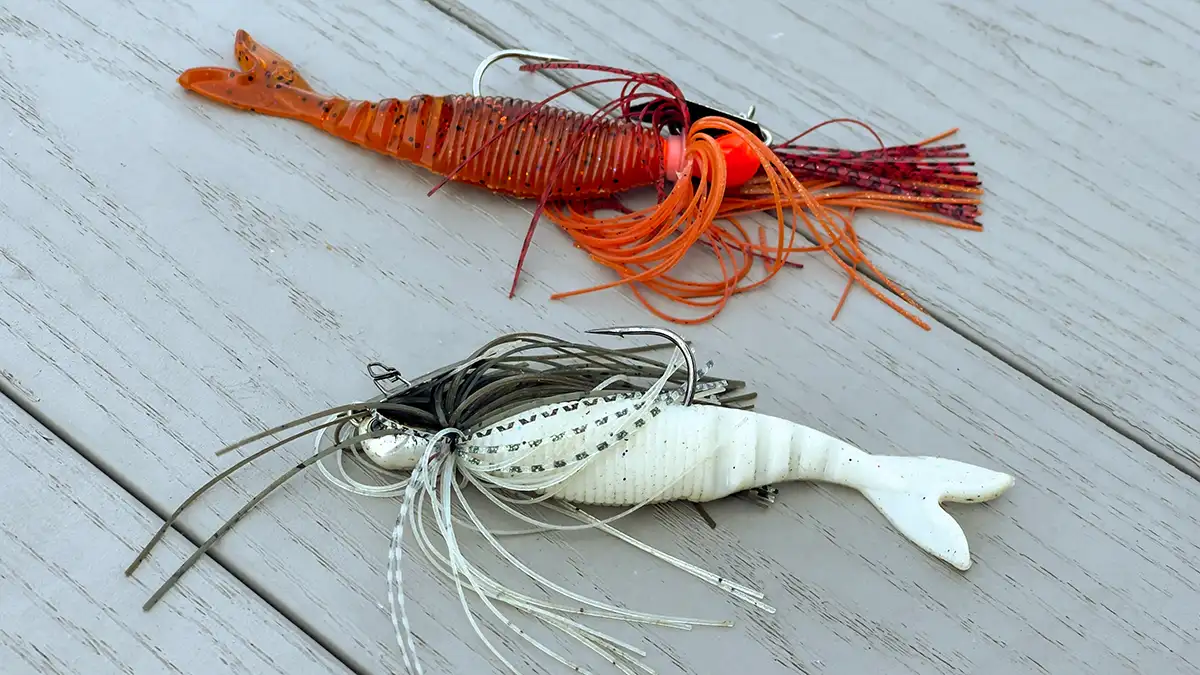
Best Overall: Yamamoto Zako
The Yamamoto Zako was created specifically to be fished on ChatterBait. It’s sized perfectly for ChatterBaits to add to the action of a ChatterBait and not compete with it. Its segmented body and tail flows perfectly with the natural undulation of the chatterbait. The profile exactly matches the ChatterBait and their smaller versions work perfect on smaller Mini Max, Micro and Mini ChatterBaits.
Yamamoto’s plastic formulation is some of the best in the industry. The nose of the Zako is dense which makes it hold onto the ChatterBait keeper very well. And the body is soft and supple to flow behind the bait. Their colors are extremely well done in the colors that not only perfectly match the ChatterBaits and vibrating jigs on the market, but also the most popular colors that anglers want to fish.
If you can only use one trailer on a ChatterBait, we highly recommend the Zako to get the job done. You can mimic baitfish, bluegill, and even crawfish well with this setup.
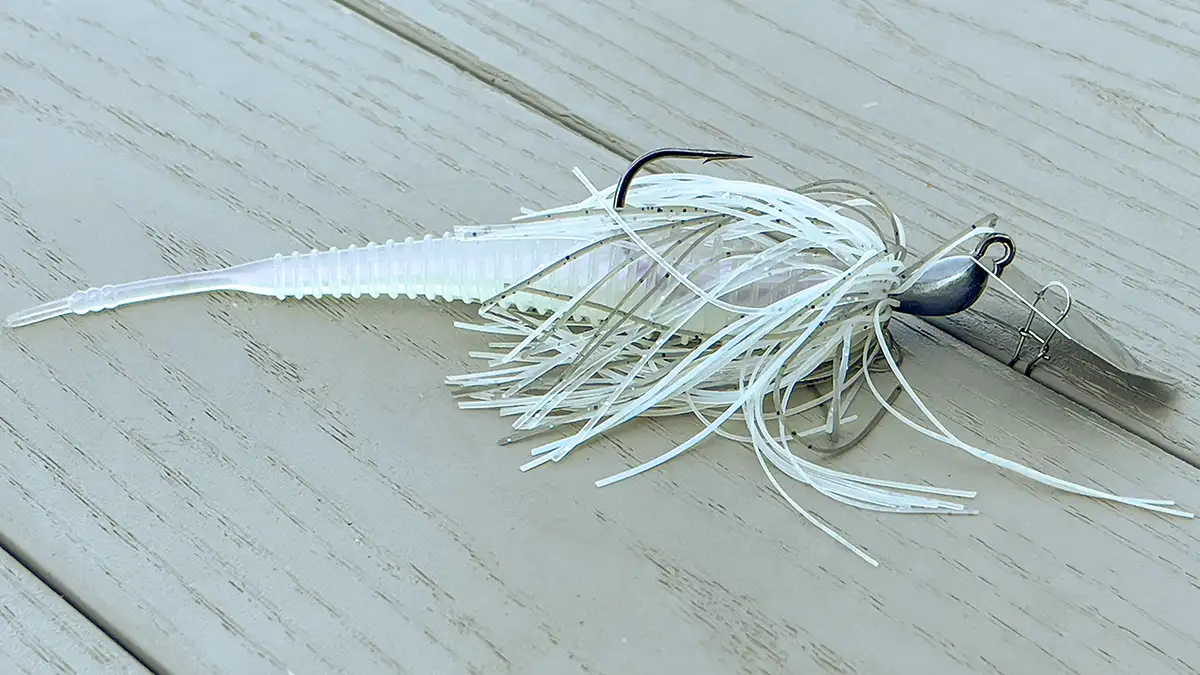
Best Single Tail Action: Missile Baits Spunk Shad
Missile Baits partnered and collaborated with Hog Farmer Baits to come up with a line of Spunk Shad trailers created for ChatterBaits and vibrating jigs that give the bait a nice big profile and also give it a ton of whip action behind the bait. It’s a different vibration with the bulky ribbed body at the head and whip tail at the back. The Missile Baits version has a soft plastic formulation with Missile Baits dynamite colors.
I personally am a big fan of this type of trailer. Truth be told I’ve used a Zoom Twin Tail Trailer on my ChatterBaits for a long time. And this to me is a more robust version of that with better colors and a lot more “whip appeal.” And the added bulk can help the ChatterBait stay up over cover.
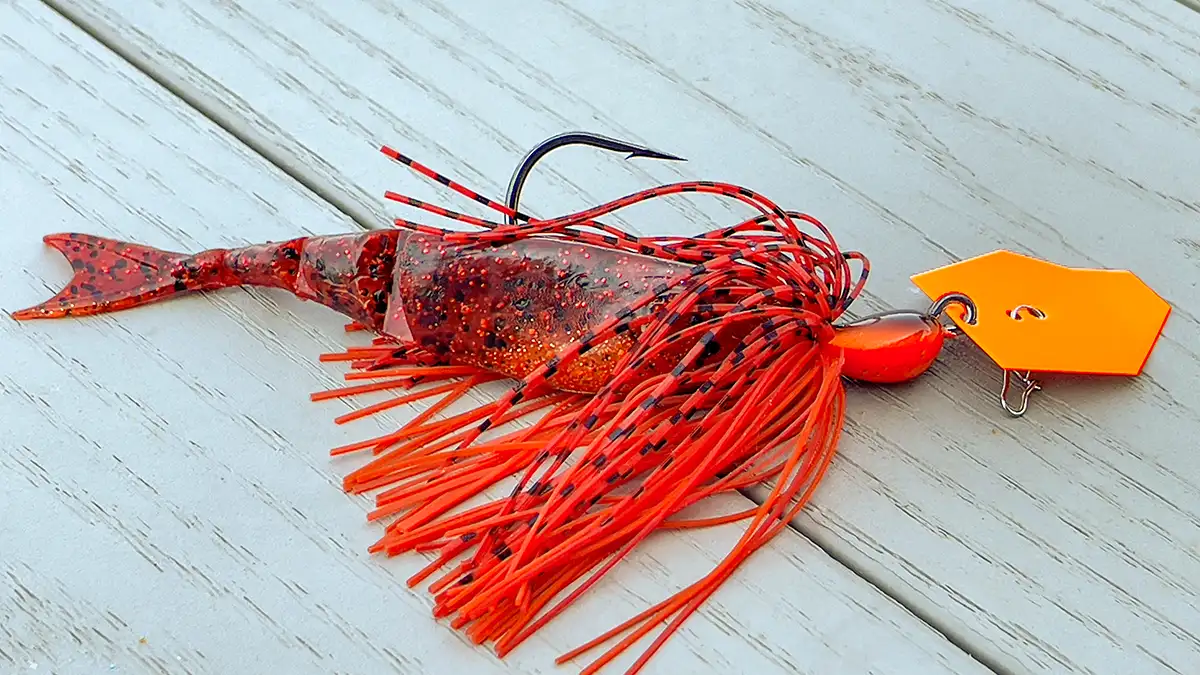
Best Shad Trailer: Z-Man RaZor ShadZ
The Z-Man RaZor ShadZ are a bit larger shad body trailer than the Zako. It’s of course made out of Elaztech and the colors are perfect matches for the Z-Man ChatterBaits. This one of those ChatterBait trailers that just goes together with a ChatterBait perfectly. The tail has a bit bigger fork with the segmented body kicks nicely without changing the action of the bait too much.
At 4 1/2 inches and in 14 colors with 4 to a pack. You can get a couple different colors and they will last you a lot of fish.
Best Kicking Trailer: Z-Man Goat
For just a straight double tail kicking ChatterBait trailer, the Z-Man Goat is hard to beat. It’s a twin tail grub that comes in 3 different sizes from 3 inches to 4 1/4 inches to fit all sizes of vibrating jigs. The body covers your hook and the tails kick at all speeds of retrieve.
Double tail grubs and craw trailers have a way of helping a vibrating swim jig plane and keep it level as it bounces through and over cover. Swimbait and shad trailers can sometimes let the bait go up on its side when it crawls over cover. So this is a nice bait to keep your bait swimming straight with some added flutter to the shimmy.
Best Craw Trailer: Zoom Speed Craw
The Zoom Speed Craw is the longtime staple among devout ChatterBait fishermen. It’s a compact profile that gives off some add flap and flutter to the shimmy of a vibrating jig. The quality of Zoom plastics is top of the industry. These are affordable, you get a bunch in every bag and the colors can be matched to any jig or vibrating swim jig. So they are super versatile without being overpowering as a trailer. This is one of the all-time staples in ChatterBait trailers.
Honorable Mention Craw: Strike King Scounbug
Strike King just released the new Scounbug this year and this bait is one of the better new trailers for Jigs and ChatterBaits. It has a great but subtle kicking action. It’s very streamlined to flow through the water nicely on a steady retrieve. And they have great colors and scent. The Scounbug pairs super nicely with Thunder Crickets and ChatterBaits alike. I’ve been using it a bunch this spring and this is my first season using it, so I’m not ready to give up all my other ChatterBait trailers, It’s a welcomed addition, however, to my rotation of trailers.
Best Swimbait Trailer: Reaction Innovations Skinny Dipper
Another one of those staple baits. The Reaction Innovations Skinny Dipper is one of the best swimbaits for fishing through grass by itself and it’s turned out to be a fan favorite for adding to swim jigs and vibrating jigs as a trailer for a swimming shad trailer. I know guys who do really well fishing the Big Dipper as a swim jig and Chatterbait trailer for big bass in the spring. But the regular Skinny Dipper at 5 inches and its narrow profile make a terrific ChatterBait trailer.
With more than 30 colors, 7 baits to the bag and the really affordable price. This is a popular ChatterBait trailer for anglers from the upper northwest to Florida. If you love swimbait trailers and fish a lot of grass, this is the one you will like.
Honorable Mention Swimbait: Keitech Swing Impact FAT
Another iconic swimbait, that doubles as a great swimbait trailer for swim jigs and Chatterbaits when you are trying to mimic swimming minnows. The dense bulky head of the Swing Impact FAT holds well on a ChatterBait keeper, and kicks well at all speeds. And they have so many good colors to catch a variety of fish on a variety of sizes of ChatterBaits because they make so many sizes. And it gives the bait some buoyancy as well.
This is the most robust and versatile line of swimbaits available to fishermen with nearly 80 colors and 8 different size offerings. So using them as ChatterBait trailers is a no brainer if you love a swimbait as a trailer.
How to Choose the Right Chatterbait Trailer
As avid ChatterBait users, we’ve used just about every plastic on a ChatterBait at some point or another and we basically break chatterbait trailers down into the following categories:
- Single tail
- Shad
- Kicking
- Craw
- Swimbait
So our picks for best ChatterBait trailers are based on the best in each of these categories, a few honorable mentions and the best overall. The reason we try to break up in categories is because some guys are swimbait guys. Some guys are craw guys. I’m personally a single tail guy. But I don’t want to tell you what I like is the best.
So we test a ton of different ones, look at them underwater, talk with other anglers, read other angler’s reviews and then do our research and comparisons to come up with the best of each category.
ChatterBait Trailer Selection Tips
It’s important to note the importance of using some type of soft-plastic trailer on your ChatterBait, regardless of the situation. Not only does it add some necessary bulk to the overall profile but it also provides a more natural look as it swims horizontally throughout the water column. Keeping within our theme of simplicity, here are three soft-plastic trailer types I strongly recommend for ChatterBaits. In regards to color selection, it’s good practice to match the color of your soft-plastic trailer to the skirt color of your ChatterBait.
- Shad profile: If you’re fishing your ChatterBait through heavier cover such as aquatic vegetation or fallen trees, a slimmer and more streamline profile trailer seems to work best as it comes through cover easier. I guess it’s worth stating the obvious that these shad-shaped trailers also work very well when the bass are actively feeding on baitfish. I’ve had the most success using the Z-Man Razor ShadZ and the Z-Man DieZel MinnowZ (buy here).
- Creature bait: Yes, I know creatures and crawfish don’t just swim around horizontally all throughout the water column. But these soft-plastic trailers with added appendages displace more water which allow the bass to detect their presence with their lateral lines. I like to use these types of trailers when I’m around a lot of bluegill in order to more closely mimic their thicker body profiles and also whenever I’m fishing in murky waters; the extra action and flapping of the appendages helps the bass feel and track the lure with ease. I like to use the Z-Man Turbo CrawZ (buy here) and Hella CrawZ (buy here) for these applications.
- Grub: This is the type of trailer I probably use the least because it seems to perform best on a much smaller, finesse-sized ChatterBait and I don’t fish that way as often. But if you’re fishing in a creek, river or a pond, you should absolutely have some type of soft-plastic grubs nearby so you can put ‘em on your smaller ChatterBaits. In my experience, the Z-Man GrubZ (buy here) tends to have a lot of great actions and can last months on the back of your ChatterBait.
Chatterbait Trailer Action
Obviously the trailer does different things based on its size shape and appendages. A shatter bait vibrates and undulates side to side while moving forward. Because of that too much over powering action in the trailer can make the bait not swim right. But the right trailer can also help keel the bait, and compliment the side-to-side action very well. So things that flutter in back while it swims side to side, often looks like a baitfish hustling off with its tail kicking behind it.
Chatterbait Trailer Color
The color can make a difference too. Do you want it to perfectly match your vibrating jig or do you want it to compliment or contrast the bait. Do you need a bunch of color options or just a few that mimic, craws, bluegill, baitfish. Or maybe you just have staple colors you like to fish on certain bodies of water and you want your trailers to come in those staple colors. Those are all things we consider when choosing the best ChatterBait trailer.
Chatterbait Trailer Size
And then there is the overall size of the trailer to consider. Do you want to have a large profile or a more compact profile. Do you want it to look like a certain type of prey and does it fit your vibrating jig. With Chatterbaits coming in so many different sizes, having a trailer that doesn’t overpower the Chatterbait is important.


